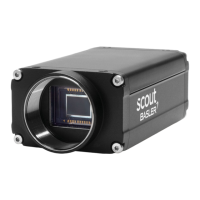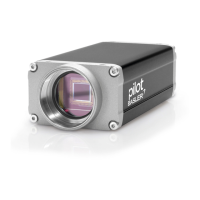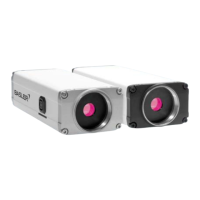AW00089317000 I/O Control
Basler ace GigE 77
6.2.4 Working with the Timer Output Signal
As mentioned in Section 6.2.1 on page 74, the source signal for the output line can be set to "timer
active". The camera has one timer designated as "timer 1". When you set the source signal for the
output line to "timer active", timer 1 will be used to supply the signal to the output line.
Timer 1 operates as follows:
A trigger source event occurs that starts the timer.
A delay period begins to expire.
When the delay expires, the timer signal goes high and a duration period begins to expire.
When the duration period expires, the timer signal goes low.
Currently, the only trigger source event available to start the timer is "exposure active". In other
words, you can use exposure start to trigger the start of the timer.
If you require the timer signal to be high when the timer is triggered and to go low when the delay
expires, simply set the output line to invert.
The timer signal can serve as the source signal for output line 1 on the camera. For information
about selecting the timer 1 output signal as the source signal for output line 1, see Section 6.2.1 on
page 74.
6.2.4.1 Setting the Trigger Source for the Timer
1. Use the Timer Selector to select timer 1.
2. Set the value of the Timer Trigger Source parameter to exposure active. This will set the
selected timer to use the start of exposure to begin the timer.
You can set the Trigger Selector and the Timer Trigger Source parameter value from within your
application software by using the Basler pylon API. The following code snippet illustrates using the
API to set the selector and the parameter value:
Camera.TimerSelector.SetValue( TimerSelector_Timer1 );
Camera.TimerTriggerSource.SetValue( TimerTriggerSource_ExposureStart );
You can also use the Basler pylon Viewer application to easily set the parameters.
For more information about the pylon API and the pylon Viewer, see Section 3.1.1 on page 45.
To set the trigger source for the timer:
Trigger source event occurs
Delay
Duration
Fig. 48: Timer Signal

